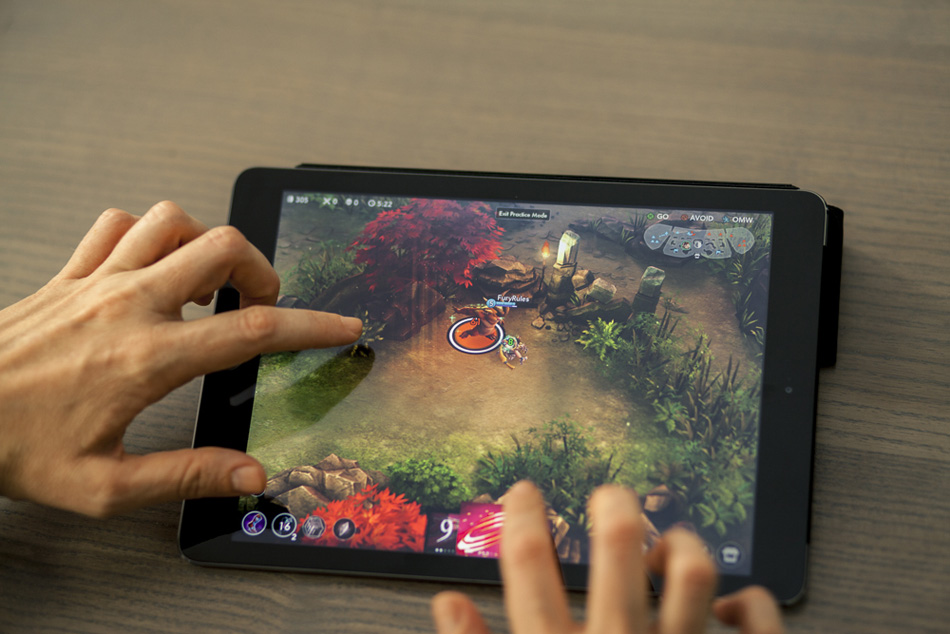
Mobile gaming has a lower barrier of entry, but that doesn’t mean it is more appealing. (Photo via esportsobserver.com)
In the world of esports, PC and console gaming reign supreme – and while mobile gaming has taken hold of the casual gamer market, it has yet to reach the esports market.
Though developers like Critical Force and Super Evil Megacorp have made noise in the esports landscape, they have yet to hit the mainstream. Indeed, to do so, mobile game developers face obstacles unlike those of their counterparts.
Traditional Gaming
As an industry, gaming has traditionally targeted hardcore gamers – that is, their customer base would be limited to the few who would be willing to pay the most.
In the early days, games would require a high barrier to entry (hardware is required to play any game), as well as a steep learning curve.
This high barrier to entry still exists – particularly in console gaming, where a PlayStation or Xbox is a required purchase to play any game. These gamers are notoriously demanding – leading, in many ways, to the divergence in sales between the two consoles. While Microsoft attempted to create an all-in-one hub with the Xbox, Sony doubled down on performance.
The effects were enormous: combined with a high price point, and subpar performance, Microsoft lost market share to Sony – an industry-leading 57%.
This misestimation serves as a few lessons:
- That console gamers demand performance
- Benefits to the end-user, and developers, must be extremely clear
Divergent Strategies for Mobile and PC/Console Gaming
Compared to console gaming, mobile games target a vastly different market. Unlike the Xbox, which began with the smaller, more concentrated gamer market, smartphones began with a much broader audience. This set the stage for mobile gaming – which targeted the vast majority of this audience.
From this, a clear strategy emerged for mobile game developers: rather than optimizing performance, as traditional game developers would, mobile game developers would look to optimize the number of users – a strategy that has yet to prove profitable.
The footnote here is that it is difficult to compare profits in this manner – since many more console game developers are established companies, rather than the startups who are characteristic of mobile game developers.
Game pricing, and its results, are further evidence of the difference in strategy between mobile games and PC/console games – console and PC games generally monetize via a combination of an initial purchase and microtransactions, while mobile games monetize via advertising and microtransactions.
The common variable here, microtransactions, are a key piece to understanding the differences between the two types of games – where console and PC games have succeeded, mobile games have largely failed.
From the linked piece:
“But even for the successful developers, the backlash against in-app purchases is growing…
Confirming this trend, Mark Beccue, ABI Research senior analyst predicts: “As a revenue model, in-app purchase is very limited today. The vast majority of current in-app revenue is being generated by a tiny percentage of people who are highly-committed mobile game players. We don’t believe the percentage of mobile game players making in-app purchases will grow significantly.”
Part of this is due to conflicting strategies. Microtransactions are an effective way to leverage a concentrated market: consumers with the greatest willingness to pay would be more likely to spend on microtransactions. In contrast to the core market for mobile games, who will have a lower willingness to pay, PC/console gamers are less likely to be negatively affected by the presence of microtransactions.
Does Mobile Work in Esports?
This leads to the question: is mobile gaming viable as an esports platform?
The value for consumers is clear – something that Sam Riber, SVP at MKTG can confirm:
“Given the intuitive nature of using a touchscreen, there is a shorter learning curve for mobile gamers vs. learning a complex PC title like League of Legends. Consequently, there is an evolving market for organized, mobile gaming competitions, but it remains to be seen how significant and sustainable mobile can remain as an eSports platform. While Vainglory has carved out a niche as a mobile title offering a simplified version of the popular MOBA genre, PC and console-based competitions remain the most complete form of esports competition.”
Going further, a large part of the viability of a given game in esports remains the role that skill plays in the equation:
“In today’s world, console, and especially PC, allow more opportunities for an individual’s talent to comprehensively influence a game’s outcome due to the level of mechanical/strategic control – which will likely keep these platforms at the forefront of the industry unless technology/mobile hardware improves to the point where gamers maintain similar mechanical control on the mobile platform.”
In my estimation, the value that physical controls provide in PC and console gaming drastically outpaces any benefits that mobile gaming can currently provide in the esports sphere.
For mobile gaming to work in esports may require a fundamental shift – one that guarantees that the highest-value customers will download the games in question, and that smartphones will be accepted as a platform by gamers.
In the short term, mobile games will continue to be used as effective time wasters. One thing to keep an eye on Twitch, and whether or not they take advantage of iOS11’s ReplayKit – and if gamers are willing to adopt it.

















